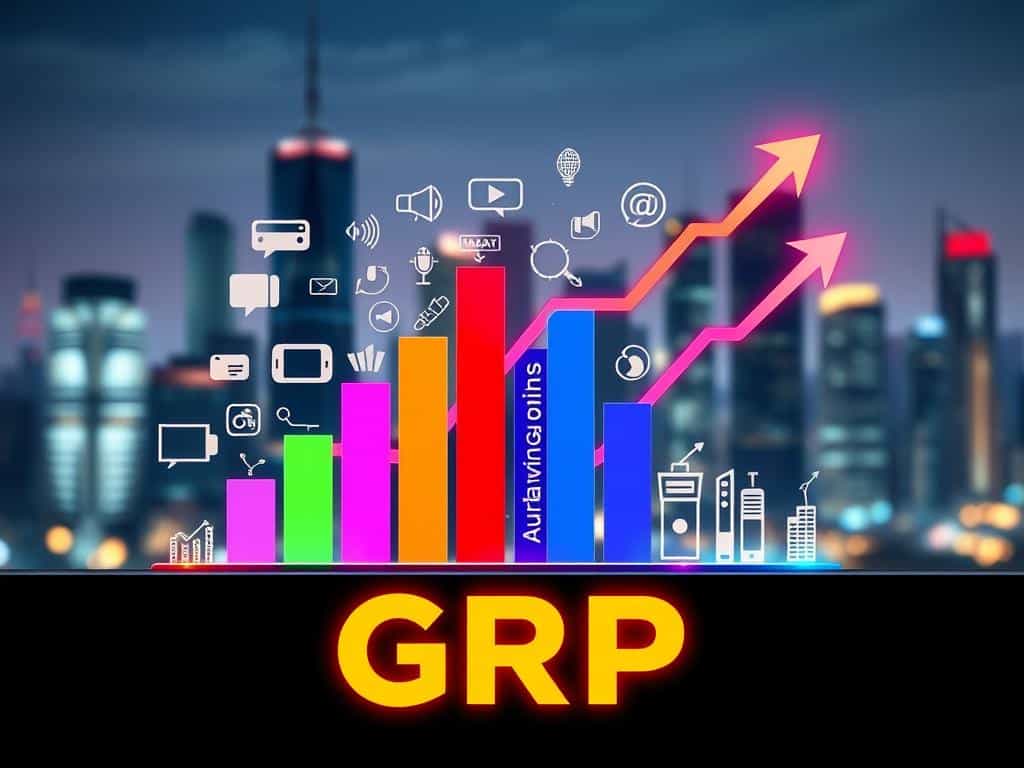In the ever-evolving world of marketing, understanding how to measure the success of an advertising campaign is critical. Marketers have access to an abundance of data that can provide real-time insights, enabling quick adjustments to optimize campaign performance. As economic pressures mount, it’s increasingly important to show the value of campaigns to prevent cuts to marketing budgets and potentially secure additional funding. Measuring campaign success is about using metrics and key performance indicators (KPIs) to assess whether you’re hitting your goals efficiently. This process helps to avoid wasted budgets and ensures marketing initiatives are making a measurable, positive impact.
Measuring advertising campaign effectiveness requires a keen eye on various advertising metrics, such as return on investment (ROI), which showcases an impressive $7,500 return or 300% from a $2,500 paid search campaign. Similarly, conversion rates can reveal how well your campaign is performing, with a 10% conversion rate indicating 100 qualified leads from 1,000 new visitors. It’s crucial to monitor campaign performance continuously using different metrics and KPI tracking to ensure that every marketing dollar is well spent.
Effective marketing campaign measurement also involves comparing pre- and post-campaign metrics to understand the true impact of your efforts. Tracking website traffic, visits by traffic source, and new versus returning visitors helps in attributing success to specific strategies. Moreover, gathering survey data from your audience can offer insights into the reach, perception, and memorability of the advertising campaign. Utilizing these insights ensures that your campaign is not only reaching the right audience but also resonating with them.
Understanding the Importance of Measuring Advertising Campaign Success
It is essential for marketers to grasp the importance of measuring the success of their advertising campaigns. This encompasses not just the initial performance but also dynamic monitoring throughout.
Why Measurement Matters
Campaign data tracking is crucial to uncover insights that drive advertising strategies. By monitoring metrics such as Return on Investment (ROI) and Conversion Rate, marketers can understand how many people took the desired action and how much was earned compared to the invested amount. A higher ROI indicates better performance, justifying marketing budgets and proving campaign efficiency.
Impact on Marketing Budgets
Marketing budget justification becomes a straightforward task when you present clear data. Real-time analytics help reveal the effectiveness of different marketing channels—whether it’s the click-through rate or cost per lead—thus providing insights into audience targeting. When decision-makers see the tangible benefits of their investment, it becomes easier to protect and expand marketing budgets even during economic uncertainties.
Real-Time Adjustments for Optimal Results
The ability to make real-time campaign optimization allows you to tweak ongoing efforts based on immediate data. This helps in adapting strategies like Cost per Acquisition (CPA) and Cost per Click (CPC). By observing real-time metrics, campaigns can be adjusted for improved performance, ensuring that you spend wisely and reach your goals efficiently.

| Metric | Purpose |
|---|---|
| Return on Investment (ROI) | Measures earnings compared to investment |
| Conversion Rate | Tracks how many people took desired actions |
| Cost per Lead | Determines the cost spent on acquiring each lead |
| Cost per Acquisition (CPA) | Measures cost to acquire a new customer |
| Click-through Rate (CTR) | Percentage of individuals who clicked on content |
| Cost per Click (CPC) | Cost incurred per click on an ad |
Setting Clear Goals for Your Advertising Campaign
Before launching any successful campaign, it is crucial to anchor your efforts with clear, well-defined objectives. Establishing your goals not only provides direction but also offers benchmarks to gauge the impact and success of your advertising initiatives.
Defining Your Objectives
Defining your marketing objectives is the cornerstone of your campaign goal setting. Whether your aim is to increase revenue, boost subscriptions, or enhance brand awareness, having concrete objectives will steer your advertising efforts toward measurable outcomes. Consider the following steps for effective goal setting:
- Align objectives with overall business goals.
- Set both short-term and long-term goals.
- Ensure goals are clear and specific.
Using OKRs and SMART Goals
To streamline campaign goal setting, leveraging structured frameworks such as OKRs in advertising and SMART goals for marketing is beneficial. Objectives and Key Results (OKRs) help outline ambitious goals along with identifiable results to achieve them. On the other hand, SMART goals ensure your objectives are Specific, Measurable, Achievable, Relevant, and Time-bound:
| Goal | Explanation |
|---|---|
| Specific | Clarify what you want to achieve. |
| Measurable | Identify metrics to track progress. |
| Achievable | Set realistic goals within your capacity. |
| Relevant | Align goals with broader business objectives. |
| Time-bound | Establish a clear deadline for achieving the goals. |
Real-world examples include increasing sales by 5% within a month to meet quarterly targets or gaining 20,000 new followers on Instagram. By adhering to these frameworks, your advertising strategy becomes more structured, results-driven, and ultimately more successful.
Key Performance Indicators (KPIs) to Track
Understanding and tracking key performance indicators (KPIs) is essential for evaluating the effectiveness of your advertising campaigns. Notably, only 23 percent of marketers are confident they track the right KPIs. Among these indicators, tracking conversion rates, maximizing ROI, customer lifetime value analysis, and managing CPA play critical roles.

Conversion Rate
The conversion rate reflects the efficiency of your campaign in turning visitors into customers or leads. It is calculated by dividing conversions by the total number of visitors and multiplying by 100. A high conversion rate indicates that your content is compelling and resonates with your target audience. Given that the average click-through rate (CTR) for search is around 6.6 percent, conversion rates can serve as a robust metric for campaign success.
Return on Investment (ROI)
Measuring ROI helps assess the profitability of your advertising efforts. This KPI gives insights into both anticipated and actual results of your marketing initiatives. By maximizing ROI, you ensure that your investments yield significant returns, making the best use of your marketing budget.
Customer Lifetime Value (CLV)
Customer lifetime value (CLV) analysis is crucial in predicting the total revenue a business can expect from a single customer over their engagement period. This KPI helps in understanding long-term customer worth and informs strategic decisions to enhance loyalty and retention. Incorporating CLV into your campaign performance metrics offers a thorough perspective on customer engagement and potential revenue.
Cost Per Acquisition (CPA)
CPA measures the cost to acquire a new customer, providing a clear view of the investment required to grow your customer base. Monitoring customer acquisition cost (CAC) assists in optimizing marketing efforts and effectively allocating budget. By managing CPA, marketers can achieve a balanced approach to spending and return.
With over 2.6 billion online buyers worldwide, representing more than 33 percent of the world’s total population, it is vital to leverage KPIs to gauge campaign effectiveness and steer marketing strategies. Impressions, reach, clicks, CTR, and conversions must be scrutinized to master campaign optimization and drive superior results.
Choosing the Right Tools for Campaign Measurement
To truly understand the efficacy of your advertising campaigns, leveraging the right campaign measurement tools is essential. By employing a range of analytical technologies, you can gain comprehensive insights into your marketing performance, which is critical in a data-driven landscape where 84% of marketing professionals feel pressured to prove marketing ROI. Below, we explore some key tools that can significantly enhance your campaign measurement efforts.
Google Analytics
Google Analytics for advertising is one of the most powerful free tools available for marketers. It offers an in-depth look at how visitors interact with your website, providing key metrics such as visitor locations, time spent on the site, number of pages viewed, and traffic sources. Leveraging this tool, you can generate campaign URLs to track specific marketing efforts, thus facilitating granular tracking and analysis. Experts predict the generation of 463 exabytes of data daily; hence, integrating Google Analytics can help centralize and make sense of this vast amount of information.
Social Media Analytics Tools
Given the high impact of social media in today’s marketing environment, social media impact tracking is vital. Tools like Twitter Analytics provide critical data like profile visits, mentions, engagement, tweet impressions, and more. Free hashtag tracking tools such as Social Searcher and Twubs offer valuable insights into hashtag popularity, helping you optimize your social media strategies. Social listening tools also allow you to track conversations, media analytics, and even identify potential influencers engaging with your content, aiding in comprehensive campaign measurement.
Call Tracking Software
For businesses that rely heavily on phone interactions, call tracking technology emerges as an indispensable tool. This software captures conversion-related data, providing insights into which marketing channels generate the most valuable calls. Tracking offline conversions becomes easier, ensuring that you can connect every customer’s journey back to specific advertising efforts. This is particularly beneficial when there’s a significant variance in cost per lead across different channels like Facebook and Google.
Incorporating a mix of these campaign measurement tools will enable you to accurately measure and interpret your campaign data, leading to more informed strategic decisions. For more comprehensive coverage on these tools, consider checking out resources like Meltwater’s blog on marketing campaign measurement for further insights.
How Do Impressions in Amazon Advertising Help Measure the Success of an Advertising Campaign?
Understanding impressions in amazon advertising is crucial for evaluating campaign success. Impressions indicate how often ads are shown to potential customers, reflecting the visibility and reach of a campaign. By analyzing these metrics, advertisers can gauge brand awareness, optimize targeting strategies, and enhance ad performance for better engagement and conversion rates.
Are the Metrics for Measuring Advertising Effectiveness the Same as Measuring Campaign Success?
While measuring the effectiveness of advertising campaigns focuses on the impact of individual ads through metrics like reach and engagement, assessing campaign success evaluates the broader objectives, such as brand growth or revenue. Both intersect, but success often considers long-term outcomes beyond immediate advertising performance. Each requires tailored metrics for accurate analysis.
FAQ
Why is it crucial to measure the success of an advertising campaign?
Measuring the success of an advertising campaign is essential to determine if you’re achieving your marketing objectives efficiently. This helps to avoid wasted budgets, optimize resource allocation, and make real-time adjustments for improved performance. It also provides clear metrics to justify your marketing spend, which is critical in sustaining and potentially expanding marketing budgets.
How does measuring campaign success impact marketing budgets?
By providing clear metrics and demonstrating the efficiency of your campaigns, you can justify your marketing spend. This is particularly important during economic uncertainty when companies scrutinize expenses. Showing the value of your campaigns can protect your budget from cuts and even secure additional funding.
What are real-time adjustments in marketing campaigns, and why are they important?
Real-time adjustments involve making data-driven changes to your campaign while it is still running. By tracking performance metrics continuously, you can tweak strategies on the go to enhance results. This adaptability can turn a potentially unsuccessful campaign into a success by optimizing performance immediately rather than waiting until the campaign ends.
How can I set clear objectives for my advertising campaign?
Defining clear objectives at the outset is pivotal for directing the focus of your campaign efforts. Techniques such as Objectives and Key Results (OKRs) and SMART goals (Specific, Measurable, Achievable, Relevant, and Time-bound) provide structured approaches to goal-setting. These methodologies help in crafting focused and effective marketing campaigns, whether your aims are to increase revenue, boost subscriptions, or enhance brand awareness.
What are Objectives and Key Results (OKRs) and how are they used in advertising?
OKRs are a goal-setting framework that helps in defining and tracking objectives and their outcomes. In advertising, OKRs can guide your campaigns by setting clear targets and the measurable actions needed to achieve these targets. This structured approach ensures that your campaign efforts are aligned with broader business goals.
What are some key performance indicators (KPIs) to track in an advertising campaign?
Key KPIs to track include Conversion Rate, Return on Investment (ROI), Customer Lifetime Value (CLV), and Cost Per Acquisition (CPA). These metrics provide insights into campaign performance, efficiency, and profitability. For example, the Conversion Rate measures how effectively a campaign turns visitors into customers, while ROI assesses the profitability of your marketing efforts.
How does Conversion Rate impact the measurement of an advertising campaign?
Conversion Rate reflects the efficiency of a campaign in turning visitors into customers or leads. It is a critical metric that indicates how well your campaign is achieving its primary goals, whether that’s making sales, getting sign-ups, or other desired actions.
Why is Return on Investment (ROI) important for measuring campaign success?
Return on Investment (ROI) reveals the profitability of your advertising efforts. It shows the gain or loss generated relative to the amount of money invested in the campaign, helping you assess the financial success and efficiency of your marketing initiatives.
What is Customer Lifetime Value (CLV) and why is it relevant?
Customer Lifetime Value (CLV) predicts the total revenue a business can expect from a single customer over their entire relationship. This metric is crucial for understanding the long-term value of your customers and for developing strategies that maximize this value, enhancing overall business growth.
How does Cost Per Acquisition (CPA) inform campaign effectiveness?
Cost Per Acquisition (CPA) indicates the cost to acquire a new customer. By tracking CPA, you gain insights into the investment required to expand your customer base, enabling you to optimize spending and improve the cost-efficiency of your campaigns.
What tools can I use to measure the success of my advertising campaign?
Various tools are available to measure campaign success, including Google Analytics for tracking website traffic and visitor behavior, social media analytics tools for monitoring performance and engagement on social platforms, and call tracking software for capturing conversion-related data from phone interactions. These tools collectively help in scrutinizing campaign performance across different channels effectively.
How can Google Analytics help in tracking advertising campaign performance?
Google Analytics is a widely-used, free resource that provides a multitude of insights regarding website traffic. It allows you to see how visitors find your site, their behavior while there, and overall traffic patterns, all of which are crucial for assessing the effectiveness of your campaigns and making data-driven decisions.
What are social media analytics tools, and how do they assist in campaign measurement?
Social media analytics tools track performance and engagement on social media platforms. They provide metrics such as likes, shares, comments, and follower growth, which help you understand how your content and campaigns are resonating with your audience, enabling you to optimize your social media strategy.
Why is call tracking software beneficial for offline marketing efforts?
Call tracking software captures conversion-related data from calls, providing critical insights into customer interactions and campaign effectiveness. It is particularly beneficial for businesses that rely heavily on phone calls to engage with customers, helping to measure the success of offline marketing efforts accurately.







